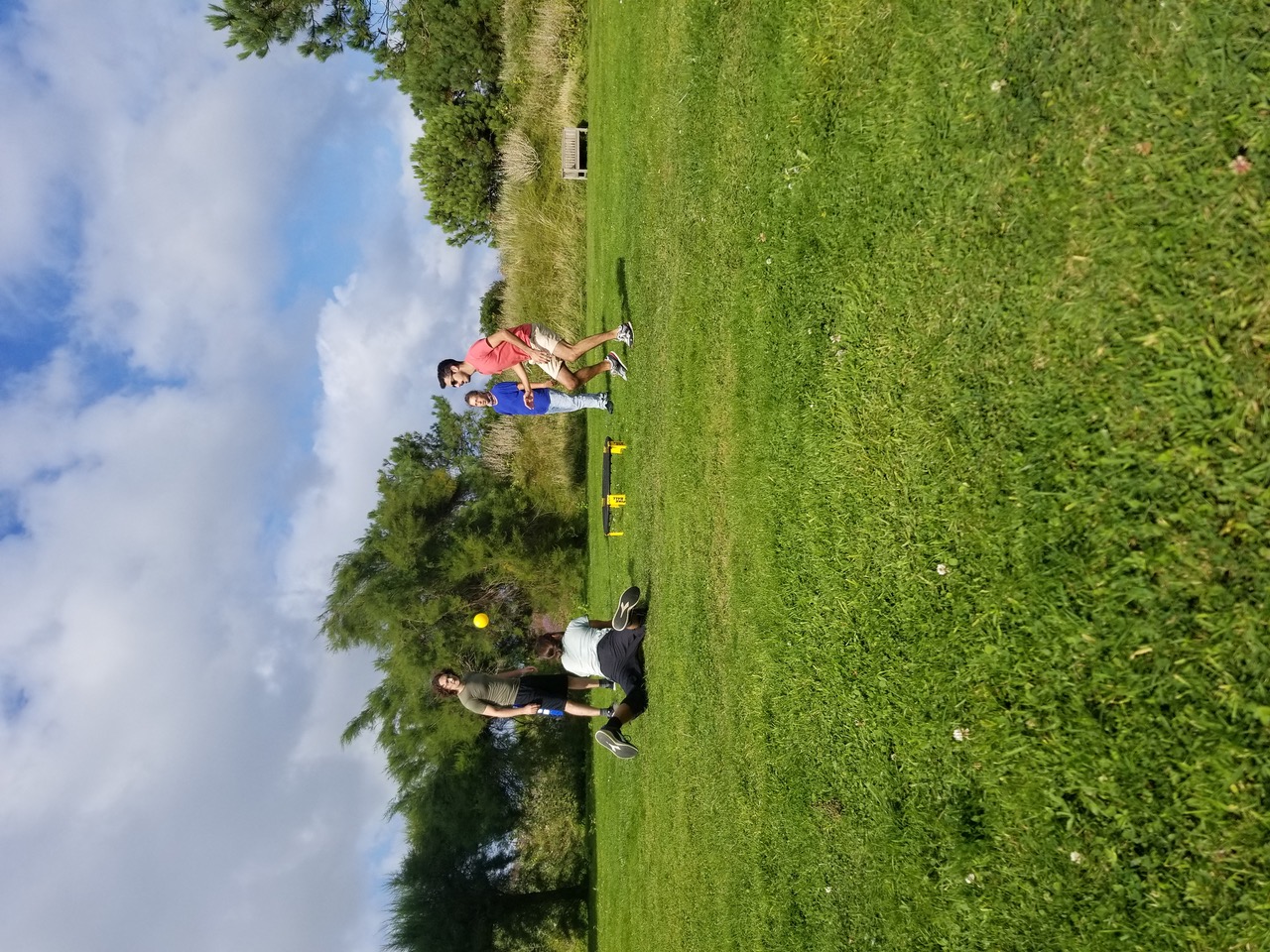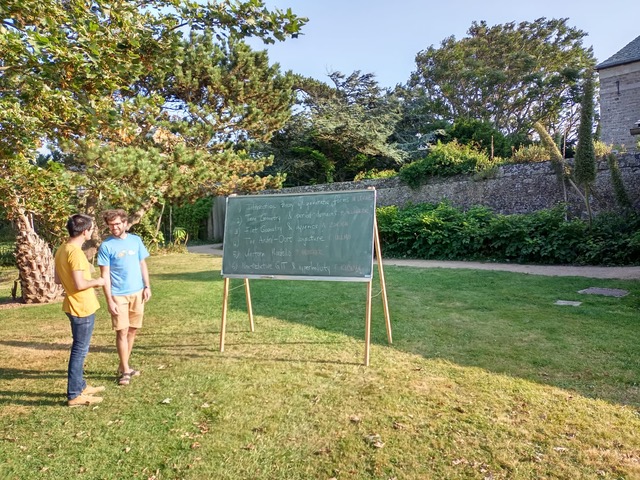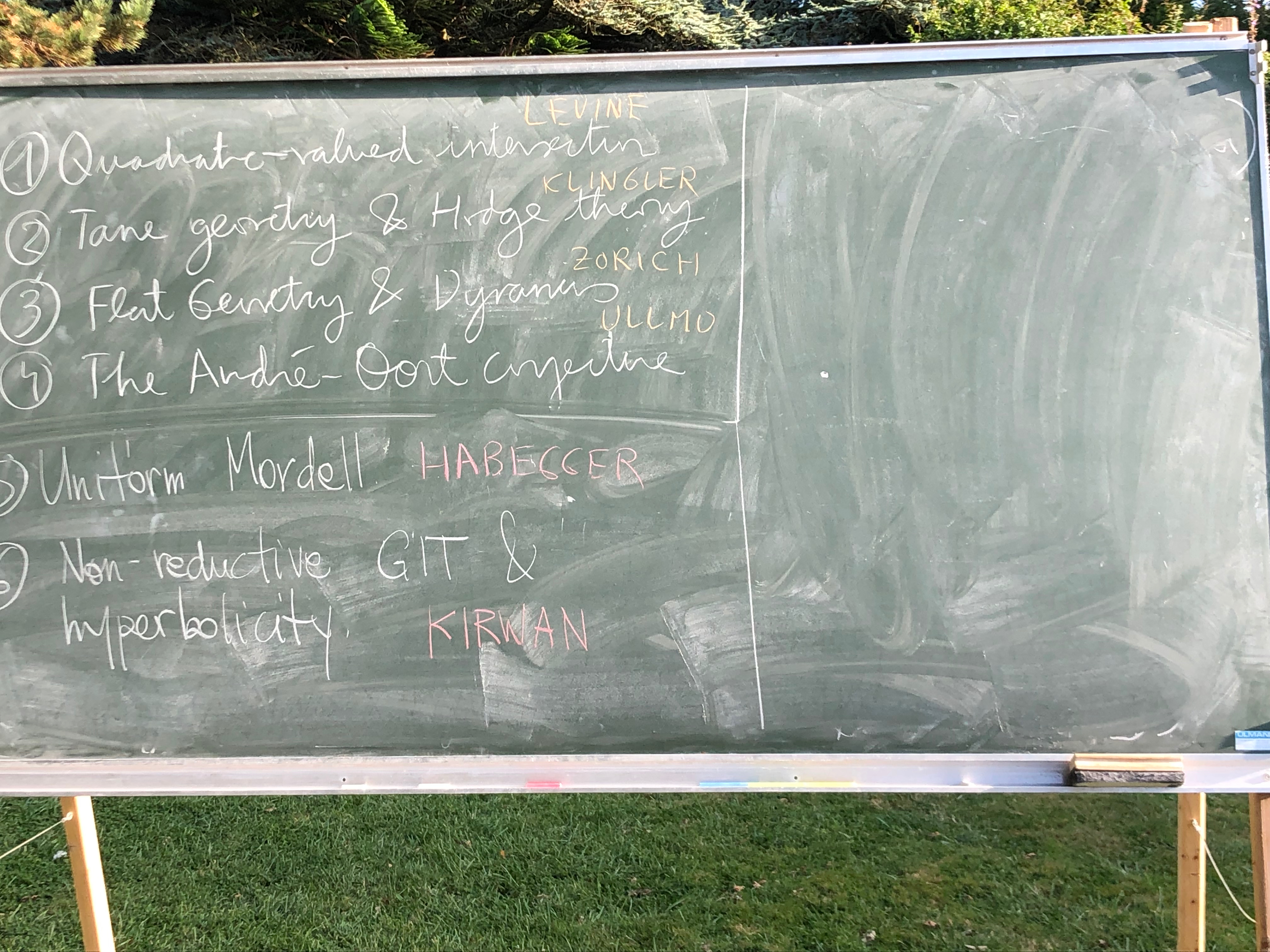

















I. Constructing the moduli space
1. Stable reduction of curves
Olivier de Gaay Fortman
Nodal curves, stability, nodal reduction, and the stable reduction theorem. Sources: [ACG], Chapter X, [Liu02], [ModuliNotes], Lectures 1-8
2. Deformation theory of nodal curves
Thomas Blomme
Deformations of smooth curves, deformations of nodal curves, Kuranishi families. Sources: [ACG], Chapter XI, [ModuliNotes], Lectures 9-13
3. Moduli space of stable curves
Eloise Hamilton
Constructing the moduli space by gluing Kuranishi families, stratification of the boundary. Optional: alternative construction via GIT. Sources: [ACG], Chapter XII, [ModuliNotes], Lecture 14
II. Top weight cohomology and boundary complexes
4. Mixed Hodge theory for smooth varieties
Mohammed Moakher
Logarithmic de Rham complex, weight spectral sequence. The dual complex of a simple normal crossing divisor, and top weight cohomology as the reduced homology of the boundary complex. Sources: [Deligne70], [Deligne71], [Durfee83], [Payne13], [KK98], [ModuliNotes], Lectures 15-17
5. Dual complexes of normal crossings divisors
Mattia Cavicchi
Monodromy and dual complexes of normal crossing divisors as symmetric $\Delta$-complexes. Cellular homology of symmetric Δ-complexes. Sources: [CGP18], Sections 4 and 6, [ModuliNotes], Lectures 20-24
6. Boundary complex of $M_g$ and its cellular homology
Emiliano Ambrosi
Description of the dual complex of the boundary divisor in the moduli space of stable curves and its identification with a moduli space of stable tropical curves. Contractibility of the weight locus and the loop and weight locus. Relations to Outer Space. Low genus computations. Sources: [ACP15], [CGP19], [ModuliNotes], Lectures 25-27, [Vogtmann15]
III. Background on the cohomology of the moduli space of curves
7. Virtual cohomological dimension of $M_g$
Olivier Benoist
$M_g$ as a classifying space for the mapping class group. Virtual duality groups. Harvey’s complex of curves. Sources: [Harer86]
8. The Euler characteristic of $M_g$
Thomas Krämer
Orbifold Euler characteristics, coordinates on Teichmüller space, dual cell decompositions, counting the ways of gluing surfaces from polygons. Sources: [HZ86]
9. Stable cohomology and the tautological ring
Salvatore Floccari
Kappa classes. The tautological ring and its (conjectural) structures. Growth rate of the tautological ring. Mumford’s conjecture and the theorem of Madsen and Weiss. Sources: [Vakil03], [Hatcher11], [ModuliNotes], Lectures 28-30
IV. Graph complexes and GRT
10. Graph complexes
Matilde Manzaroli
Kontsevich’s graph complexes, quasi-isomorphism to cellular homology of $\Delta_g$. Low genus examples. Lie bracket on the graph complex. Sources: [Kontsevich93], [CV03], [CGP18], Section 5, [ModuliNotes], Lectures 31-32
11. Feynman amplitudes and wheel classes
Clément Dupont
Feynman amplitudes as integrals on configuration spaces. Proof of nontriviality of the odd wheel classes. Sources: [ModuliNotes], Lectures 33-34
12. The Grothendieck-Teichmüller Lie algebra
Vincent Bouis
Overview of Grothendieck-Teichmüller theory. Willwacher’s theorem identifying GRT with a Lie subalgebra of graph cohomology. Sources: [Willwacher15]
13. Willwacher’s theorem
Javier Fresán
V. Proofs of main results
14. Mixed Tate motives and Brown's Theorem
Alex Torzewski
Overview of mixed Tate motives and relations to multiple zeta values. The extensions corresponding to odd zeta values. A free Lie subalgebra of GRT. Sources: [Brown12a], [Brown12b]
15. Exponential growth of $\mathrm{H}^{4g-6}(M_g;\mathbb{Q})$
Peter Jossen
Universal enveloping algebras and the Poincaré-Birkhoff-Witt Theorem. Computation of the Poincaré series of a free Lie algebra. Conclusions. Sources: [CGP18], Theorem 2.7, [ModuliNotes], Lecture 36
16. Zagier’s formula for the top weight Euler characteristic of $M_{g,n}$
Giuseppe Ancona
Source: [CFGP19]
Additional Talk
Generalised Kontsevich graphs, $r$-spin intersection numbers and topological recursion
Elba Garcia-Failde
For some decades, deep connections have been forming among enumerative geometry, complex geometry, intersection theory of the moduli space of curves and integrable systems. In 1990, Witten formulated his celebrated conjecture that predicts that the generating series of intersection numbers of $\psi$-classes is a $\tau$ function of the KdV hierarchy, which was first proved by Kontsevich making use of a cell decomposition of a combinatorial model of the moduli space of curves by means of certain ribbon graphs which are Feynman graphs of a cubic hermitian matrix model with an external field. In 2007, Chekhov, Eynard and Orantin introduced a procedure that associates a family of differentials to a Riemann surface with some extra data, which we call spectral curve. This universal method helps connecting numerous algebro-geometric contexts. In the Witten-Kontsevich case, the Airy curve allows to build the connection with the four mentioned areas. After an introduction to topological recursion in general and the Witten-Kontsevich case in particular, I will introduce more general structures which help organising the intersection theory of the moduli space of curves: cohomological field theories, and explain how they are related to topological recursion. Together with R. Belliard, S. Charbonnier and B. Eynard, we extend both this relation and the Witten-Kontsevich instance to intersection numbers with Witten’s $r$-spin class, allowing us to complete the connections to the four mentioned areas in the context of Witten’s generalised conjecture for $r>1$.